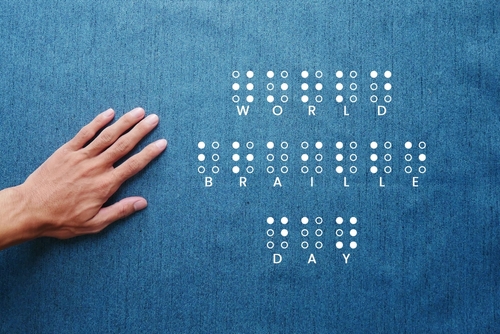Every January 4th, the world comes together to observe World Braille Day, a day dedicated to celebrating the importance of braille as a vital means of communication for people who are blind or have low vision. More than just a date on the calendar, this day highlights the ongoing journey toward full accessibility and inclusion. It’s a moment to honor the ingenuity of Louis Braille and recognize the powerful role his invention plays in literacy, independence, and human rights.
For millions of people worldwide, braille is the key to education, employment, and personal expression. As we look toward World Braille Day 2026, we explore its history, modern-day significance, and the ways communities are working to ensure everyone can participate fully in society.
The History and Origins of World Braille Day
The story of braille begins with its creator, Louis Braille, who was born in France on January 4, 1809. At the age of three, he had an accident in his father’s workshop that led to an infection, causing him to become completely blind. Despite this, he excelled in his studies and earned a scholarship to the Royal Institute for Blind Youth in Paris.
At the institute, the students were taught to read by feeling raised letters, a slow and inefficient method. Inspired by a military code called “night writing,” developed by Charles Barbier for soldiers to communicate in the dark, Louis Braille began creating his own system. By the age of 15, he had developed the six-dot cell system that we now know as braille. It was simpler, more efficient, and could be used for reading, writing, and even musical notation.
His invention was a revolutionary step forward, but it wasn’t immediately adopted. It was only after his death in 1852 that braille gained widespread acceptance. In recognition of his birthday and his monumental contribution, the United Nations officially designated January 4th as World Braille Day in 2019.
How World Braille Day is Celebrated Today
World Braille Day is observed globally with a focus on raising awareness, promoting literacy, and advocating for accessibility. Celebrations are less about grand festivities and more about meaningful action and education.
Educational Initiatives
Schools, libraries, and organizations for the blind often host workshops and events to teach sighted people the basics of braille. These activities help demystify the system and foster a greater understanding and appreciation for it. Many institutions also launch literacy campaigns, distributing braille books and learning materials to children and adults.
Community Events
Advocacy groups and community centers organize seminars, panel discussions, and public talks featuring speakers who are blind or have low vision. These events provide a platform to share personal stories, discuss challenges, and highlight the importance of braille in daily life. It’s a time for the community to come together, share resources, and support one another.
Technological Showcases
Modern technology has transformed how braille is used. On World Braille Day, companies and innovators often showcase the latest advancements in accessibility tech. This includes refreshable braille displays that connect to computers and smartphones, braille printers, and software that converts digital text to braille. These tools are crucial for making the digital world accessible.
Global Advocacy
On an international level, organizations like the World Blind Union and the United Nations use World Braille Day to call on governments and institutions to uphold the rights of people with disabilities. This includes ensuring public information, books, and websites are available in accessible formats like braille.
Evolving Trends in Celebration
In recent years, the celebration of World Braille Day has embraced a more inclusive and creative approach.
- Social Media Campaigns: Hashtags like #WorldBrailleDay and #BrailleLiteracy are used to share facts, personal stories, and educational content, reaching a global audience and fostering a virtual community of support.
- Inclusive Design: More companies are using World Braille Day to announce products with inclusive packaging. Brands in the beauty, food, and pharmaceutical industries have started incorporating braille on their labels, a trend that advocates hope will become standard practice.
- Art and Expression: Artists and designers are integrating braille into their work, from tactile art exhibitions to fashion. These creative expressions celebrate braille not just as a tool, but as a beautiful and integral part of culture.
Frequently Asked Questions (FAQs)
What is braille?
Braille is a tactile system of reading and writing used by people who are blind or have low vision. It consists of raised dots arranged in cells of up to six dots. Each combination of dots represents a letter, number, or punctuation mark.
Is braille still relevant in the digital age?
Absolutely. While audio technologies like screen readers are valuable tools, they are not a replacement for literacy. Braille is the only system that allows blind individuals to learn spelling, grammar, and punctuation, just as sighted people do by reading printed text. It is fundamental to education and professional success.
How can I support braille literacy?
You can support organizations that provide braille books and educational materials to people with visual impairments. Advocating for braille signage in public spaces and inclusive product packaging in your community can also make a significant difference. Learning the braille alphabet is another great way to show support and raise awareness.
What is the significance of celebrating World Braille Day?
World Braille Day raises awareness about the importance of accessibility and inclusion for the 2.2 billion people worldwide living with some form of vision impairment. It affirms that access to communication is a universal human right and highlights the role braille plays in ensuring that right for people who are blind.
Celebrate Understanding and Access
World Braille Day is more than an observance; it’s a call to action. It encourages us to think about how we can make our communities more accessible and to appreciate the systems that empower individuals. As we celebrate in 2026, let’s honor the legacy of Louis Braille by continuing his work toward a world where everyone can read, learn, and connect.
